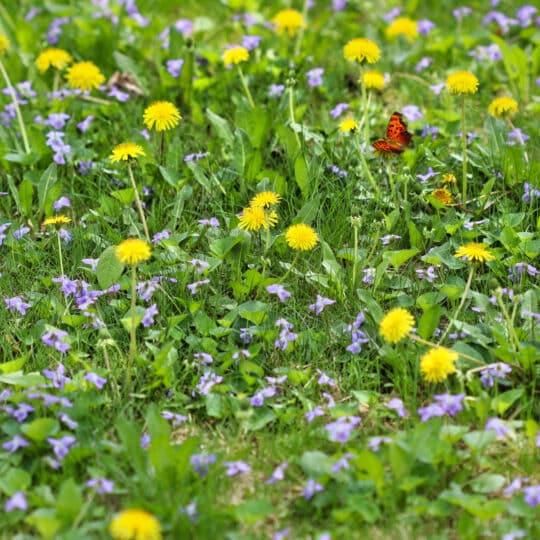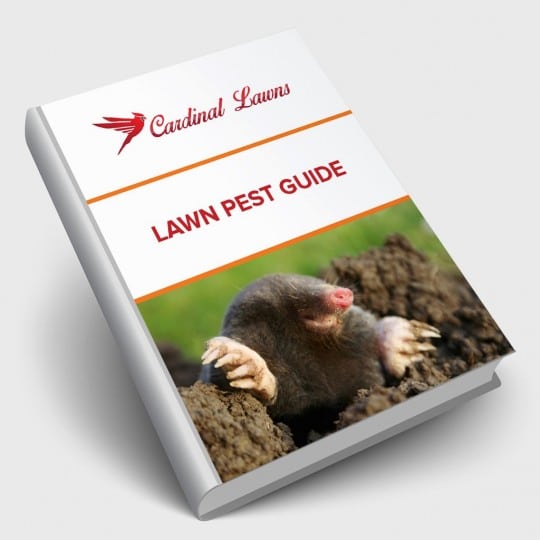What’s No Mow May
And is it Right for Your Lawn?
Posted
May 16, 2024

If you’ve noticed your neighbors aren’t getting their mower out that much this month, they may be following an initiative known as No Mow May. The idea is simple. Homeowners leave the lawn alone all month to help provide a habitat and food source for early season pollinators. The idea is spreading through communities across the country. But is it something you should try?
What You’ll Bee Attracting
While helping pollinators sounds like a lovely idea, it’s not just bees and butterflies that will flock to your meadow-like yard. Wasps, moths, beetles, and flies will also seek refuge in the tall grasses. Once they see what a wonderland your yard is, they may stick around to see what’s to come this summer. This means your desirable flowers and veggie gardens may also be on the menu.
Naturally, to be able to grow tall grass, your lawn needs to be more than turf. And if you want to attract the pollinators, you have to allow certain weeds to bloom. White clover and dandelions happen to be two of the most invasive flowers that pollinators love but some homeowners despise because of their difficulty to control.
One alternative is to try and section off a part of your lawn or garden to grow wildflowers or other sources of sweet nectar. Although these may not bloom as early as weeds, you’re still doing something to help the pollinator population. Creeping thyme is another low-growing floral food source that’s easily established and not as troublesome as tall grass.
What Happens in June
If you’ve decided to let your lawn grow all month, the lush grass will be too tall to cut all at once. Make sure your mower blades are sharp to get the cleanest cut. Adjust your mower to cut only a third at a time every week. This will go easier on your lawn and your mower. Just make sure you have enough gas—and energy—because it’s going to take a little longer to get it back down to an optimal height.
Another plus to tall grass is that it grows deeper roots. This helps it become more drought tolerant. So you could be doing your lawn a favor, especially if your spring and summer are unseasonably dry. Even when you do cut it, cut high to shade the soil and provide lasting benefits all season.
No Mow May Alternatives
Say you want to help the pollinators, but you don’t want to wait all month to mow. You can participate in a Less Mow May—doesn’t rhyme as well, but is better for your lawn. A Slow Mow Summer can also sync up with the rate at which your grass grows. Since some grasses go dormant in the heat, you won’t have to mow as much. Same goes for Mow High July. It all goes to show you want to mow high and less frequently whenever possible.
Before you decide to change up any schedule, ensure there are no local ordinances prohibiting tall grass where you live. You may also have to register your lawn and post a city-issued sign declaring what you’re doing. And if you live in a wooded area, be aware that it’s another attractive habitat for ticks. Take extra precautions by mowing a buffer between the woods and your lawn and even laying mulch down as a barrier.
After May, there are plenty of ways to continue to care for pollinators. Plant a range of native trees, shrubs, and flowers around your yard and garden. They don’t all have to be in your lawn. Whatever you decide to do, make sure it suits your lawn and garden style.

Download Your FREE Lawn Pest Guide
Pests become most prevalent during the heat and humidity of summer. Take some time to learn about the signs of infestations before any damage can be caused to your landscape. This handy guide will teach you how to spot common lawn pests and how to keep them from causing harm to you and your property.